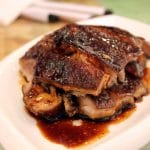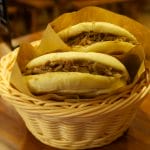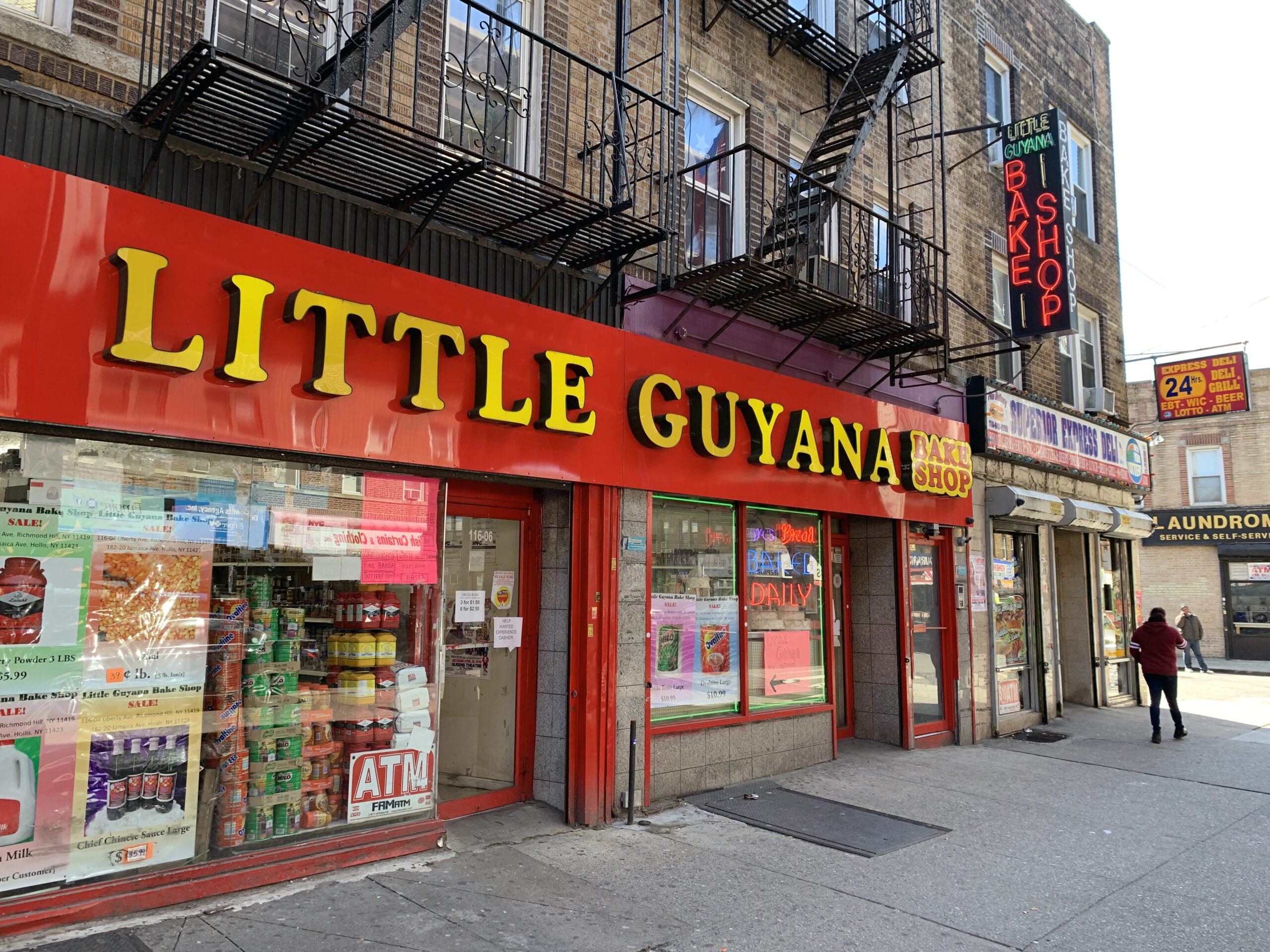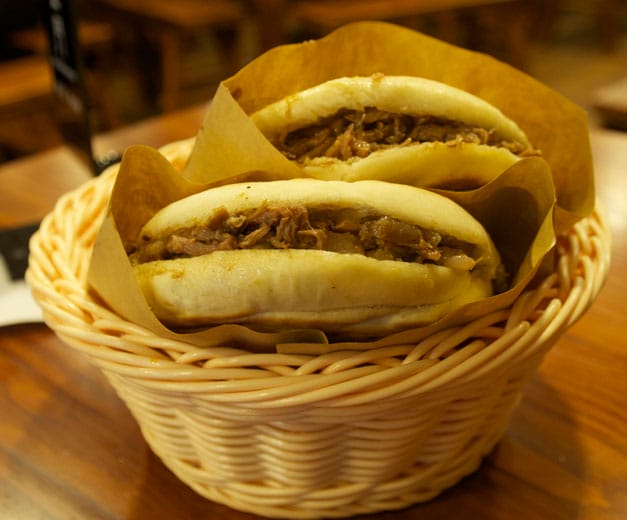Dinner and a comedy routine isn’t a concept that has caught on in China. A few Sichuan restaurants feature a traditional show with the help of some loud music, a man with a flashy cape, and a mask with many thin layers that changes with a quick, hidden tug. But a Hunan restaurant? Never.
At the popular neighborhood joint Hunan Xiangcun Fengwei, however, the finger-licking good food from Chairman Mao’s home province shares top billing with the subtle art of Chinglish menu translations that at first glance seem to defy explanation.
Care for some “cold acid beans”? “Tile homesickness fish”? “Old godmother indica”? “Hillbilly chicken pot”? The odd names are a testament to the flowery, descriptive verbiage used to describe dishes in the Chinese language. In Mandarin food translation, “homesickness” refers more to a home-style dish prevalent in a certain province or town than to the actual feeling of nostalgia. In this case, the provenance of the dishes is Hunan, a region known for using chilies, shallots and garlic in hefty quantities. The meat is more often than not cured or smoked, offering a distinct flavor and different type of spiciness than the flavors of nearby Sichuan, whose cuisine tends to numb the mouth with the peppercorn named after the province.
Other mistranslations often come from very specific cuts of the knife or cooking methods that defy translation, as they are generally found only in Chinese cooking. Chinese chefs-in-training have to master more than 40 cutting techniques, including turning a carrot into a flower, before they graduate from culinary school.
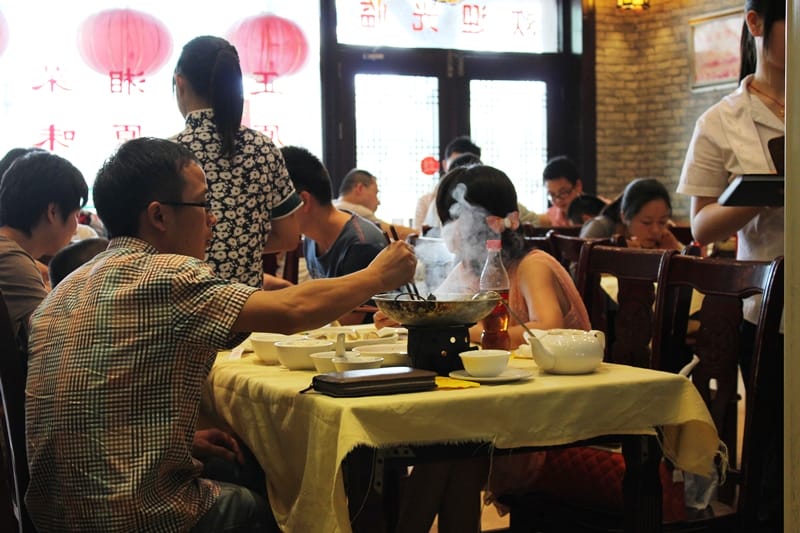
In all honesty, the menu at Hunan Xiangcun Fengwei has gone through several iterations since we’ve been coming here, and has (unfortunately?) substantially improved. The art of Chinglish is becoming a scarcer commodity as China’s development speeds forward. Luckily, the food has at least remained consistent over the years, if not actually improving as well. The restaurant houses three levels of dining rooms, with private rooms on the top. But don’t be mistaken: this is a cheap, noisy affair with Spartan decoration, save for a portrait of the Chairman.
One of our longtime favorite dishes, the “throwback cauliflower,” has recently been renamed simply “bowl of cauliflower.” The dish, an intense mix of cured bacon, chilies and whole cloves of garlic, will disappear from the table in no time. The term “throwback” comes from the method the chef uses to handle the wok, tossing and frying the ingredients in a repetitive flipping motion.
Don’t miss another classic Hunan dish, the ribs smothered in cumin, which are perfect for sharing at a big family-style meal with lots on the table. The “acid beans”(酸豆角炒腊肉, suān dòujiǎo chǎo làròu), a type of preserved long green bean served chopped with cured bacon, engulfs your mouth in a pleasing and addictive smoky-sour flavor. The “tea tree mushroom dry pot” (干锅茶树菇, gān guō cháshù gu) arrives over a Sterno flame and finishes boiling at the table. The chewy texture of the mushrooms combined with the broth, chili and garlic as they continue to cook is best savored over a cold bottle of delightfully cheap Tsingtao beer.
For those with more adventuresome palates, there is also a range of challenging dishes here that includes pickled chicken feet (鸡爪, jī zhuǎ) and pork trotters (猪手, zhūshǒu). Don’t be afraid of the “saliva chicken” (口水鸡, kǒu shuǐ jī ), however, as a better translation would be “mouthwatering chicken.” Semantics, really.
Published on November 08, 2012
Related stories
May 6, 2019
QueensWhere the A train dead-ends at Lefferts Boulevard, Liberty Avenue stretches on into the heart of the enclave known as Little Guyana, part of the larger Richmond Hill neighborhood. Once a year, for the Hindu holiday of Diwali, a bedazzled motorcade turns the street into an eruption of colors, music and lights that is a…
February 19, 2015
ShanghaiOn one of Shanghai’s busiest shopping streets, amidst the glittering Tiffany & Co, Piaget and Apple stores, Guang Ming Cun is housed in a nondescript four-story building. Glass displays in front offer a glimpse of the braised and dried meats for sale, and around the side you can peek in to watch flaky meat pastries…
May 12, 2014
ShanghaiUnwieldy English restaurant names often lose a lot in translation. Take Zhu Que Men, or “The Gate of the Vermillion Bird.” The name, which draws on Chinese astrology and Taoism, might seem a little highfalutin’ for a home-style noodle joint, but the subtext speaks volumes. Ancient Chinese scientists paired an animal with each directional point…










































